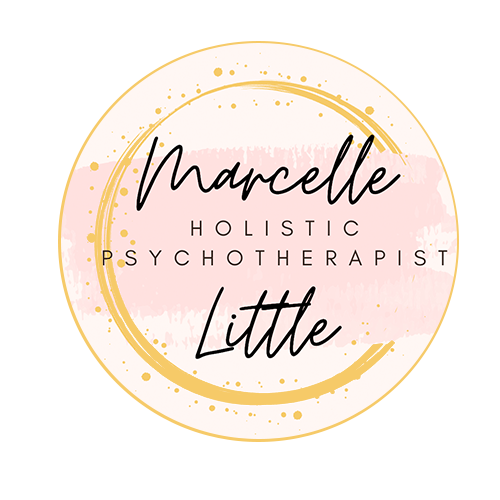What is Self-Compassion?
Inter-Compassion, Loving-Kindness, Self-Compassion, and Metta Meditation
Buddhism, alone among the world’s religions, has taken a characteristically middle path, recognizing the need to be free from destructive emotions while at the same time seeing that such freedom comes from non-judgmental awareness of just those emotions from which we seek freedom.
~Epstein, 2008, p. 24
According to Buddhist teacher and cofounder of Insight Meditation Society, Sharon Salzberg (1995), Loving Kindness Meditation (LKM) is a path of moving the heart from desolation to a deep connected space that cultivates four states of consciousness: “love, compassion, sympathetic joy, and equanimity,” establishing them as people’s truest home (p. 1). The four states of consciousness are known as “brahma- viharas” in the Pali language, where “Brahma means ‘heavenly’ and Vihara means ‘abode’ or ‘home’” (pp. 1-2). Salzberg referred to “love” or “lovingkindness” as metta (translated from Pali) through which people have “the ability to embrace all parts of ourselves, as well as all parts of the world” (pp. 18, 22). Thus, LKM often is used interchangeably with metta meditation, the process Buddha taught as a way to combat fear; metta is now a form of self-acceptance to help individuals face their hesitation to accept things as they are. Salzberg claimed, “The path to true happiness is one of integrating and fully accepting all aspects of our experience. . . . This unity, this integration, comes from deeply accepting darkness and light, and therefore being able to be in both simultaneously” (p. 12). By practicing LKM, a person develops discernment between influences of the mind that lead to love and those that contribute to suffering, which she described as “our false sense of separation” (p. 3). Salzberg explained the benefits of metta:
When we practice metta, we open continuously to the truth of our actual experience, changing our relationship to life. Metta—the sense of love that is not bound to desire, that does not have to pretend that things are other than the way they are—overcomes illusion of separateness—fear, alienation, loneliness, and despair—all of the feelings of fragmentation. In place of these, the genuine realization of connectedness brings unification, confidence, and safety. (p. 21)
American Buddhist nun Pema Chödrön (1994) taught the great philosophies of Buddhist principles. The premise of Chödrön’s teachings is that life experiences (thinking, feeling, or sensing) are worthy of compassion and appreciation (p. 99). The practice that she prescribed is loving-kindness for oneself, which then transforms to loving-kindness for others (p. 100). She recommended starting where the person is, as delineated in her book, Start Where You Are: A Guide to Compassionate Living, which outlines practices to awaken rather than improve upon, in the belief that most individuals already have all that they need (pp. 3-4).
The practice of LKM awakens people’s trust in the wisdom and compassion that are already inherent within them to know themselves, including what they perceive as the good and the ugly (Chödrön, 1994, p. 4). Chödrön pointed out that individuals’ not knowing, trusting, or loving themselves is the root of harming and inflicting pain upon Self and others (pp. 4-5). Present moment, as Chödrön described it, is whatever mood the person happens to be in, waking up to the things he or she does not feel good about, including the thoughts from which the individual wants to escape (p. 100).
Researchers in psychology, Edo Shonin, William Van Gordon, Angelo Compare, Masood Zangeneh, and Mark Griffiths (2015), from Nottingham Trent University, conducted “systematic reviews and meta-analysis (PRISMA) guidelines” to evaluate “342 papers and 20 studies (comprising a total of 1,312 participants)” on LKM and compassion meditation (CM) intervention studies (p. 1161). According to Shonin et al. (2015), “Participants demonstrated significant improvements across five psychopathology-relevant outcome domains: (i) positive and negative effect, (ii) psychological distress, (iii) positive thinking, (iv) interpersonal relations, and (v) empathic accuracy” concluding that the interventions may be beneficial to treat “a broad range of mental health issues in both clinical and healthy adult and non-adult populations” (p. 1161).
Inter-compassion is one intervention that I use regularly in my practice to combat common and painful emotional states and defenses including, shame, anger, insecurity, and sadness. As Chödrön recommends, if we start where we are, we can notice that we have moments of love, compassion, joy, and equanimity throughout our day. Even if it’s for a split moment, witnessing and relating to a child, the sun, the stars, or a pet or animal, that image and lived experience reverberates throughout our nervous system. It is through this connection where the practice begins, consciously observing the moment, and intentionally cultivating that sensation, expanding it throughout time. Like planting a seed and watering it everyday, that seed blossoms into something remarkable.
© 2019 Marcelle Mae Little All rights reserved
References:
Chödrön, P. (1994). Start where you are: A guide to compassionate living. Boulder, CO: Shambhala.
Epstein, M. (2008). Going on being: Life at the crossroads of Buddhism and psychotherapy. Somerville, MA: Wisdom.
Salzberg, S. (1995). Loving-kindness: The revolutionary art of happiness. Boston, MA: Shambhala.
Shonin, E., Van Gordon, W., Compare, A., Zangeneh, M., & Griffiths, M. D. (2015). Buddhist-derived loving-kindness and compassion meditation for the treatment of psychopathology: A systematic review. Mindfulness, 6(5), 1161-1180. https://doi. org/10.1007/s12671-014-0368-1
